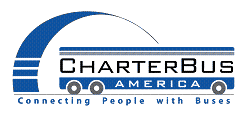What is a web database?
A web database refers to a system used to store information which can be accessed through a website. For instance, a social network can have a web database that stores the details of its members, such as username, password etc. The most popular web database system is MySQL as integrates well with PHP —the most popular server side programming language.
A web database consists of one or more tables with data. Every table has various fields for storing different types of information. These tables can be linked together to manipulate the data in a useful or interesting way. A table often uses a unique primary key for each entry, which allows for clear data selection.
What are web databases used for?
A web database can serve various purposes. Every field in a table must have defined data. For instance, a web database can contain numbers, dates and strings. A good database design involves selecting the right data type for every field to limit memory consumption and enhance accessibility speed. Although this may not be so important for small databases, bigger ones that have multiple entries will find it useful.
Content management systems (CMS) usually use web databases for storing information, like posts, comments and usernames. By using a database, a website will be updated easily without having to edit the HTML codes for each individual web page. Apart from making the creation and update of a website more efficient, it enhances the accessibility of the process to people who are not well versed with the web programming languages.
A good example where web databases are used is an online forum. A database for an online forum consists of multiple tables, including a table for settings, users and posts. The relationship between the web database tables needs to be properly defined and set so that users and posts can be easily linked together.
The difference between dynamic and static web pages
A static site stores text in form of HTML and graphics. On the other hand, dynamic web pages are created through programming scripts or languages, which retrieve or store data in the web database. However, website owners don’t have to learn the programming languages. They can easily interact with the website through user-friendly CMS. CMS can be tailored according to your specific requirements. The content and look of static web pages rarely change. To make any change, you must either create the web page yourself or ask a web developer to do it on your behalf. But dynamic pages can change on their own whenever they are loaded.




